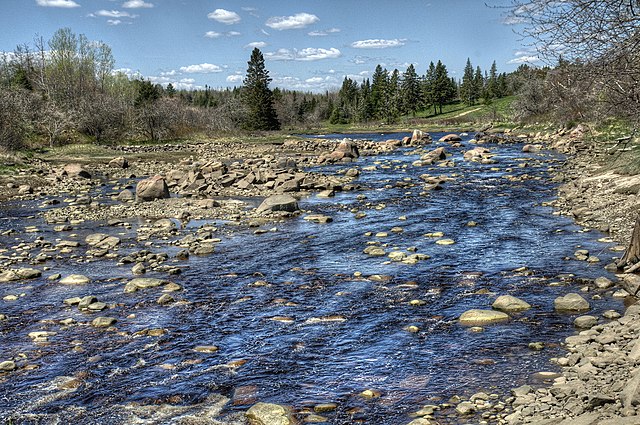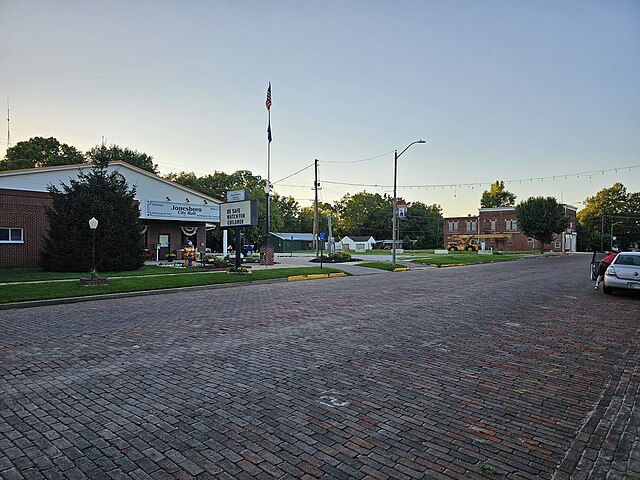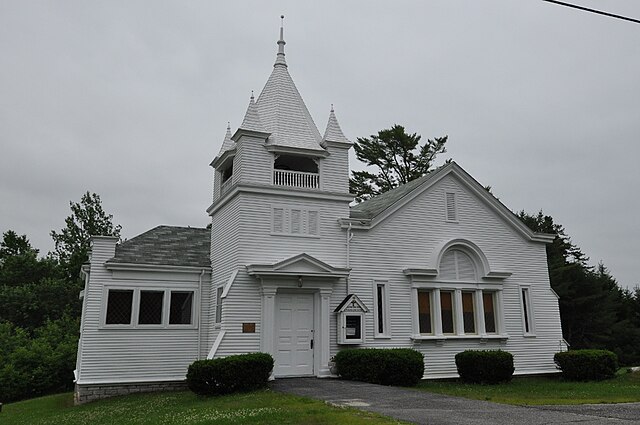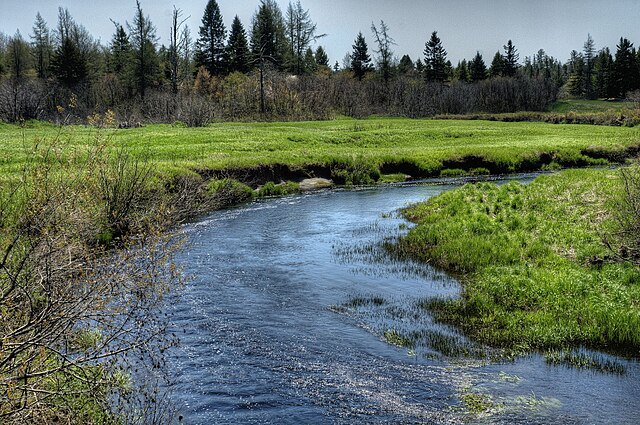Are you planning a trip to Jonesboro, Arkansas, or considering making it your home? Understanding the local weather patterns can make all the difference in your planning and daily life. Jonesboro’s weather is as dynamic as the city itself, offering everything from mild springs to hot summers and occasionally dramatic winter weather events.
Whether you’re a newcomer trying to figure out what clothes to pack or a long-time resident wanting to better understand your local climate, this comprehensive guide will walk you through everything you need to know about Jonesboro weather patterns throughout the year.
Understanding Jonesboro’s Climate Patterns
Geographic Location and Weather Influences
Jonesboro sits in the heart of Arkansas, positioned at approximately 35.84°N latitude and 90.70°W longitude. This strategic location in the Mississippi River valley significantly influences the city’s weather patterns. The relatively flat terrain allows weather systems to move freely across the region, while the proximity to large bodies of water moderates temperature extremes.
The city’s location puts it squarely in the path of various weather systems throughout the year. Cold fronts sweep down from Canada during winter months, while warm, humid air masses push up from the Gulf of Mexico during summer. This constant battle between air masses creates the dynamic weather conditions that define the region.
Humid Subtropical Climate Characteristics
Jonesboro experiences a humid subtropical climate, characterized by hot, humid summers and mild to cool winters. This climate type brings distinct seasonal variations while maintaining relatively high humidity levels year-round. The Köppen climate classification places Jonesboro in the “Cfa” category, indicating hot summers and no distinct dry season.
What does this mean for residents and visitors? Expect warm temperatures for much of the year, with significant rainfall distributed fairly evenly across all seasons. The humidity can make summer temperatures feel more intense, while winter temperatures rarely drop to extreme lows for extended periods.
Seasonal Weather Breakdown in Jonesboro

Spring Weather (March-May)
Temperature Ranges and Precipitation
Spring in Jonesboro is a time of awakening, both for nature and weather activity. March typically sees average high temperatures climbing from the mid-60s°F to low 70s°F, while nighttime lows range from the mid-40s to low 50s°F. By May, daytime highs often reach the upper 70s to low 80s°F, with nighttime temperatures settling in the comfortable 60s°F.
Rainfall during spring months averages between 3 to 5 inches per month, making it one of the wetter seasons. This precipitation comes in various forms, from gentle spring showers to more intense thunderstorm systems. The combination of warming temperatures and increased moisture creates ideal conditions for plant growth and outdoor activities.
Spring Storm Season
Spring marks the beginning of severe weather season in Jonesboro. As warm, moist air from the south collides with cooler air masses from the north, the atmosphere becomes unstable, creating conditions favorable for thunderstorm development. These storms can produce heavy rainfall, strong winds, large hail, and occasionally tornadoes.
April and May are particularly active months for severe weather. Residents should stay weather-aware during this time, keeping an eye on forecasts and having emergency plans in place. The good news? Spring storms often bring beneficial rainfall that helps maintain healthy groundwater levels and supports agricultural activities in the region.
Summer Weather (June-August)
Heat and Humidity Levels
Summer in Jonesboro can be described in two words: hot and humid. Average high temperatures during the peak summer months regularly reach the upper 80s to low 90s°F, with heat index values often climbing above 100°F due to the oppressive humidity. Nighttime offers some relief, with lows typically in the upper 60s to mid-70s°F.
The humidity during summer months can make outdoor activities challenging during midday hours. Morning and evening tend to be the most comfortable times for outdoor recreation. Air conditioning becomes essential for comfort, and staying hydrated is crucial for anyone spending time outdoors.
Thunderstorm Activity
Summer thunderstorms are a regular feature of Jonesboro’s weather pattern. These storms typically develop during late afternoon and evening hours as daytime heating creates atmospheric instability. While these storms can be intense, they often provide welcome relief from the heat and contribute significantly to the area’s annual rainfall totals.
Summer storms in Jonesboro can produce torrential downpours, strong winds, and occasional hail. Flash flooding can occur in low-lying areas and poor drainage zones. Despite their intensity, these storms usually move through quickly, often lasting only 30 minutes to an hour.
Fall Weather (September-November)
Temperature Transitions
Fall brings some of the most pleasant weather conditions to Jonesboro. September often feels like an extension of summer, with high temperatures in the 80s°F, but October and November see a gradual cooling trend. By November, daytime highs typically range from the mid-60s to low 70s°F, while nighttime temperatures can dip into the 40s°F.
The humidity levels begin to drop during fall months, making the temperatures feel more comfortable. This is often considered the best time of year for outdoor activities, from hiking and camping to sporting events and festivals.
Rainfall Patterns
Fall precipitation in Jonesboro tends to be less intense than spring and summer rainfall but remains fairly consistent. September can still see significant thunderstorm activity, while October and November typically experience gentler, longer-lasting rain events. Total monthly rainfall averages between 2 to 4 inches during the fall months.
The changing weather patterns during fall create beautiful conditions for enjoying the outdoors. Clear, crisp days become more common, and the reduced humidity makes even warmer days feel pleasant.
Winter Weather (December-February)
Cold Snaps and Ice Events
Winter in Jonesboro is generally mild compared to northern regions, but it can produce some memorable weather events. Average high temperatures during winter months range from the upper 40s to mid-50s°F, with lows typically in the 20s to 30s°F. However, Arctic air masses can occasionally push temperatures well below freezing for several days at a time.
Ice storms represent one of the most significant winter weather threats in Jonesboro. These events occur when warm air overrides a shallow layer of cold air near the surface, causing precipitation to freeze upon contact with roads, trees, and power lines. While beautiful, ice storms can be extremely dangerous and disruptive.
Precipitation Types
Winter precipitation in Jonesboro comes in various forms, including rain, freezing rain, sleet, and occasionally snow. Snow events are relatively rare and usually light, with most snowfalls measuring less than 2 inches. When snow does fall, it typically melts quickly due to the relatively warm ground temperatures.
Freezing rain and sleet are more common winter precipitation types in the area. These events can create hazardous driving conditions and cause power outages when ice accumulates on trees and power lines.
Monthly Weather Averages and Extremes
Temperature Records by Month
Understanding Jonesboro’s temperature extremes helps residents and visitors prepare for the full range of conditions they might encounter. Record high temperatures have reached above 100°F during summer months, with the all-time record reaching 111°F in July. Conversely, winter record lows have dipped below 0°F, though such extreme cold is rare and short-lived.
The temperature swings between seasons can be dramatic. It’s not uncommon to experience a 40-50°F temperature difference between a January cold snap and a July heat wave. This variability requires residents to maintain wardrobes suitable for a wide range of conditions.
Rainfall and Drought Patterns
Jonesboro receives approximately 45-50 inches of precipitation annually, distributed fairly evenly throughout the year. The wettest months typically occur during spring and early summer, while late summer and early fall tend to be drier. However, significant year-to-year variations occur, with some years experiencing drought conditions while others see above-normal rainfall.
Drought periods can occur, particularly during late summer and early fall. These dry spells can stress vegetation and increase fire danger in rural areas. Conversely, wet periods can lead to flooding in low-lying areas and along the region’s waterways.
Severe Weather Threats in Jonesboro

Tornado Activity and Safety
Jonesboro sits within a region that experiences moderate tornado activity, with peak season running from March through June. While not in the heart of “Tornado Alley,” the area sees several tornadoes each year, ranging from weak EF0 events to occasionally stronger storms.
The most significant tornado threat typically occurs during late afternoon and early evening hours when atmospheric conditions are most unstable. Residents should have multiple ways to receive weather warnings and maintain emergency supplies and plans. Interior rooms on the lowest floor of buildings provide the best shelter during tornado warnings.
Severe Thunderstorms and Hail
Severe thunderstorms pose a more frequent threat than tornadoes in Jonesboro. These storms can produce damaging winds exceeding 60 mph, large hail, and heavy rainfall leading to flash flooding. Hail events can cause significant damage to vehicles, roofs, and crops in the surrounding agricultural areas.
Most severe thunderstorms in Jonesboro develop during spring and early summer months, though they can occur throughout the warm season. The combination of atmospheric instability, wind shear, and moisture creates ideal conditions for storm development.
Ice Storms and Winter Weather
While less frequent than other weather hazards, ice storms can be among the most impactful weather events in Jonesboro. These storms can paralyze the region by making travel extremely dangerous and causing widespread power outages. Even minor ice accumulations can create hazardous conditions.
Preparation for winter weather events should include emergency supplies, alternative heating sources, and plans for potential power outages. The relatively infrequent nature of significant winter weather events means that when they do occur, they can catch residents unprepared.
Best Times to Visit Jonesboro
Optimal Weather Windows
For visitors seeking the most comfortable weather conditions, late spring (April-May) and fall (October-November) offer the best combination of pleasant temperatures and manageable humidity. These periods typically feature mild temperatures, lower humidity levels, and reduced severe weather activity.
Early spring can be beautiful but comes with increased storm activity. Summer visits should be planned with the heat and humidity in mind, while winter visits are generally comfortable but may encounter occasional cold snaps or ice events.
Seasonal Activities and Weather
Different seasons in Jonesboro offer unique opportunities for outdoor activities. Spring is perfect for hiking, fishing, and enjoying the region’s blooming landscapes. Summer, despite the heat, offers excellent conditions for water activities and evening outdoor events.
Fall provides ideal conditions for camping, hiking, and attending outdoor festivals and sporting events. Winter, while mild, can be perfect for indoor activities and occasional outdoor pursuits during warmer periods.
Weather Forecasting and Resources
Reliable Weather Sources
Staying informed about Jonesboro weather conditions requires using reliable sources. The National Weather Service office in Little Rock provides official forecasts and warnings for the region. Local television meteorologists offer detailed forecasts tailored to the area’s specific conditions.
Weather.gov remains the most authoritative source for official forecasts, warnings, and weather data. This resource provides detailed information about current conditions, forecasts, and historical weather data for planning purposes.
Mobile Apps and Alerts
Modern technology makes staying weather-aware easier than ever. Weather apps can provide real-time radar, detailed forecasts, and severe weather alerts directly to smartphones. Popular apps include those from the National Weather Service, local news stations, and commercial weather services.
Emergency alert systems, including wireless emergency alerts (WEA), can provide critical information during severe weather events. Ensuring your mobile device is configured to receive these alerts can be life-saving during dangerous weather situations.
Climate Change Impact on Jonesboro Weather

Climate change may be influencing weather patterns in Jonesboro, as it is across much of the United States. Scientists observe trends toward warmer average temperatures, changes in precipitation patterns, and potentially more intense severe weather events.
While long-term climate trends are still being studied, residents and planners are considering how changing conditions might affect everything from agriculture to emergency preparedness. Adapting to potential changes while maintaining preparedness for traditional weather patterns remains a balanced approach.
Conclusion
Understanding Jonesboro weather patterns enhances your ability to plan activities, stay safe, and fully enjoy what this Arkansas city has to offer. From the dynamic spring storm season to the comfortable fall months, each season brings unique characteristics and opportunities.
The key to living with or visiting Jonesboro’s weather is staying informed, prepared, and flexible. Whether you’re dealing with summer heat, spring storms, or the occasional winter ice event, knowledge of local weather patterns helps you make the most of your time in this vibrant Arkansas community.
Remember that weather can be unpredictable, and conditions can change rapidly. Always stay tuned to current forecasts and warnings, especially during severe weather seasons. With proper preparation and awareness, you can safely enjoy all that Jonesboro’s varied climate has to offer throughout the year.
Frequently Asked Questions
Q1: What is the wettest month in Jonesboro, Arkansas?
A1: May typically sees the highest rainfall totals in Jonesboro, averaging around 5 inches. This coincides with peak severe weather season when thunderstorms are most frequent and intense.
Q2: How often does Jonesboro get tornadoes?
A2: Jonesboro experiences several tornadoes each year, with most occurring between March and June. While the area sees moderate tornado activity, most tornadoes are weak EF0 or EF1 events, though stronger tornadoes can occasionally occur.
Q3: Does it snow much in Jonesboro?
A3: Snow is relatively rare in Jonesboro, with most winter precipitation falling as rain or freezing rain. When snow does occur, it typically amounts to less than 2 inches and melts quickly due to warm ground temperatures.
Q4: What’s the best time of year to visit Jonesboro for outdoor activities?
A4: Late spring (April-May) and fall (October-November) offer the most comfortable conditions for outdoor activities, with mild temperatures, lower humidity, and less severe weather activity compared to summer and peak storm season.
Q5: How humid does it get in Jonesboro during summer?
A5: Summer humidity in Jonesboro can be quite high, often making temperatures feel 10-15 degrees warmer than the actual air temperature. Heat index values frequently exceed 100°F during peak summer months due to the combination of heat and humidity.

